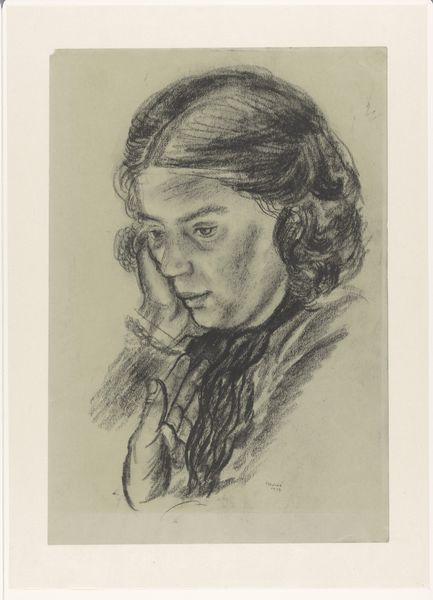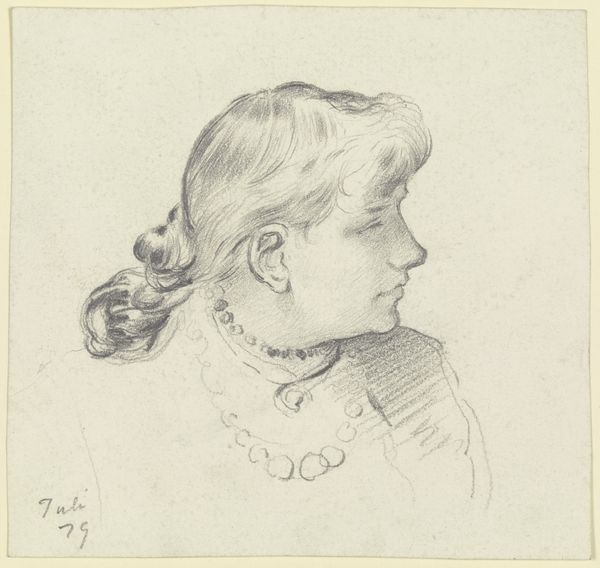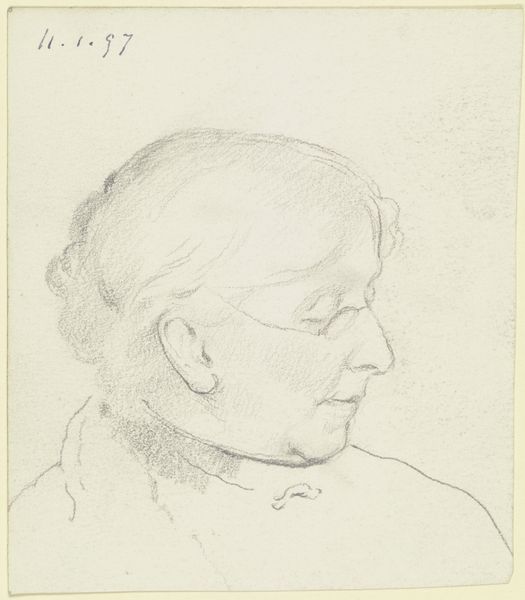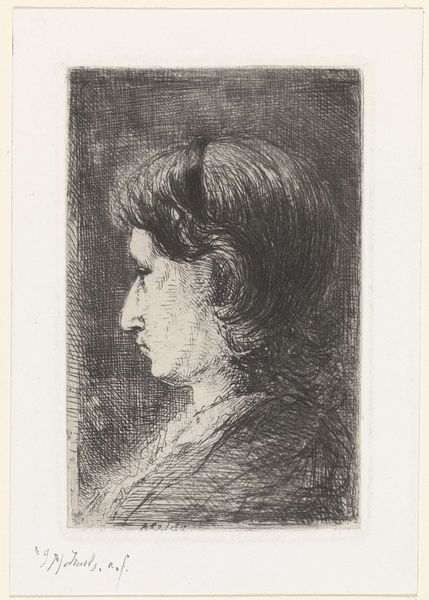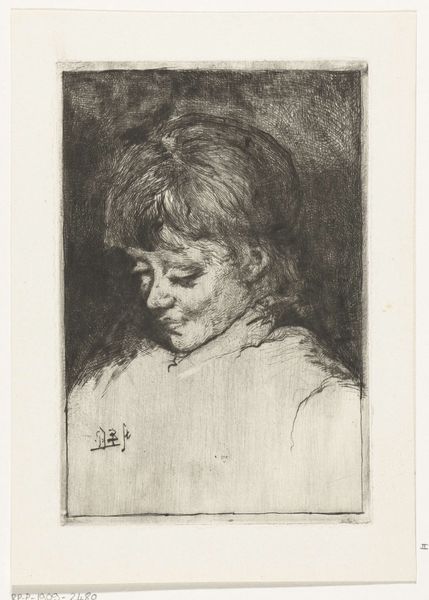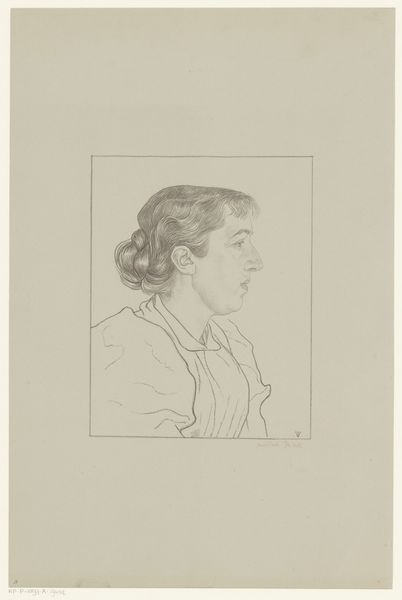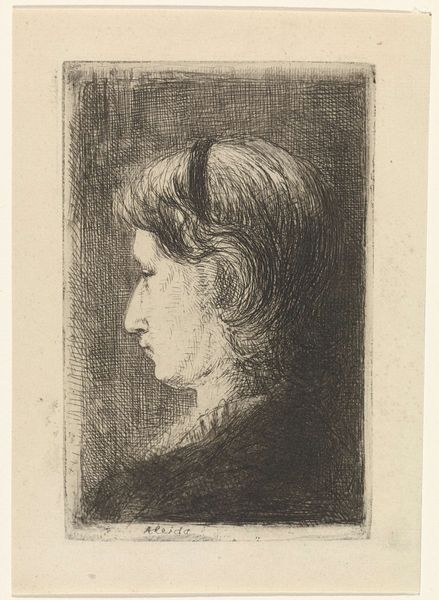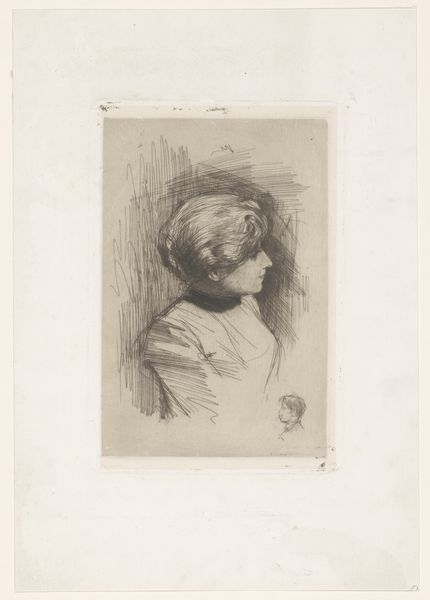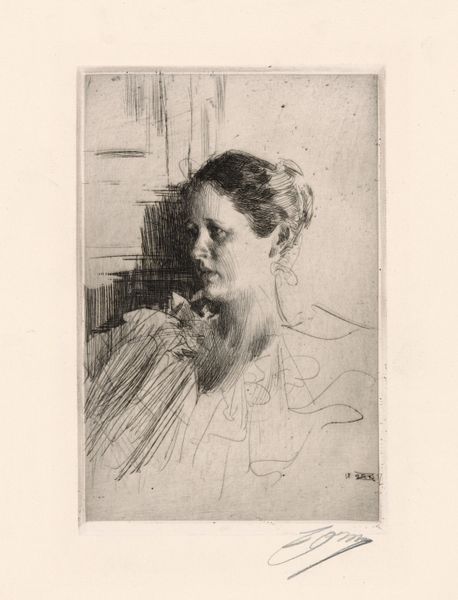
drawing, pencil
#
portrait
#
drawing
#
caricature
#
caricature
#
pencil
#
line
#
realism
Dimensions: height 315 mm, width 270 mm
Copyright: Rijks Museum: Open Domain
Editor: Here we have Willy Sluiter's 1922 pencil drawing, "Portret van Catharine van Tussenbroek," housed in the Rijksmuseum. I'm immediately struck by the economy of line; it feels almost… delicate, despite being a portrait. What do you see in this piece? Curator: It’s the interplay between line and form that fascinates me. Notice how Sluiter uses hatching and cross-hatching to suggest volume, particularly around the sitter's neck and the contours of her face. The limited tonal range—achieved solely through variations in line density—pushes us to engage with the drawing's fundamental structure. Do you observe any symbolic meaning generated by formal treatment? Editor: I hadn't really considered it that deeply! The spectacles definitely give a sense of intellectualism but that comes more from what is portrayed, and less from the use of form in its rendering... Curator: Indeed. Though it flirts with caricature, it doesn't quite cross the line. The artist highlights some physical traits to emphasize a distinct personality. He captures an individuality with just pencil, paper, and the thoughtful manipulation of line. Note the use of line, but also of tone, even in monochrome works, as generating feeling and thought beyond pure descriptive visuality. How does that interplay with the realistic and seemingly personal elements portrayed by the work? Editor: I see what you mean now. He creates a feeling without embellishment through a precise construction of his line to reflect how realism generates feeling. It’s like he found a kind of realism within abstraction, and in turn vice versa, through form and composition. I had never really considered those to exist so concurrently within Realism. Curator: Precisely! Through focused formal study we arrive at meaningful art criticism and greater aesthetic pleasure. A new paradigm is within our reach.
Comments
No comments
Be the first to comment and join the conversation on the ultimate creative platform.


